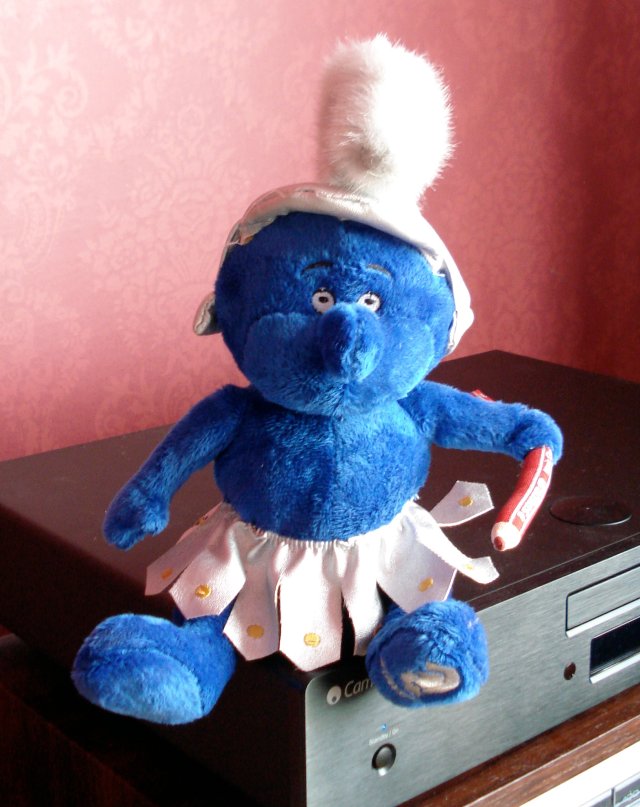
This visitor carries a Noris colour pencil:
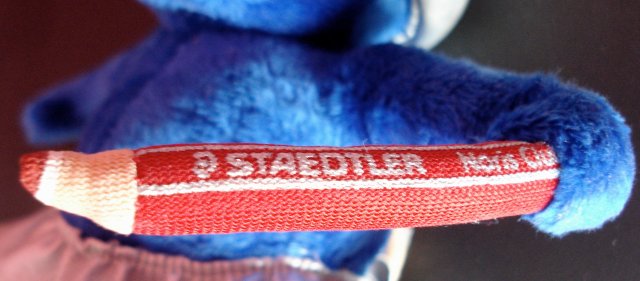
The left foot has the Staedtler logo:
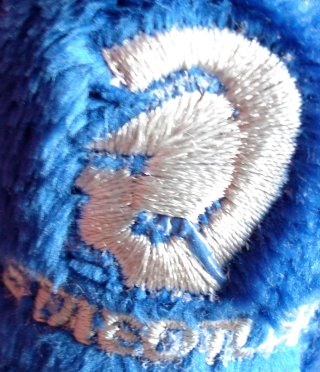
My thanks to Gail from Staedtler for sending this visitor my way.

pencil talk | pencil reviews and discussion
exploring the art and science of pencils since 2005

This visitor carries a Noris colour pencil:

The left foot has the Staedtler logo:

My thanks to Gail from Staedtler for sending this visitor my way.
Today we examine a trio of red and blue pencils from around the globe.
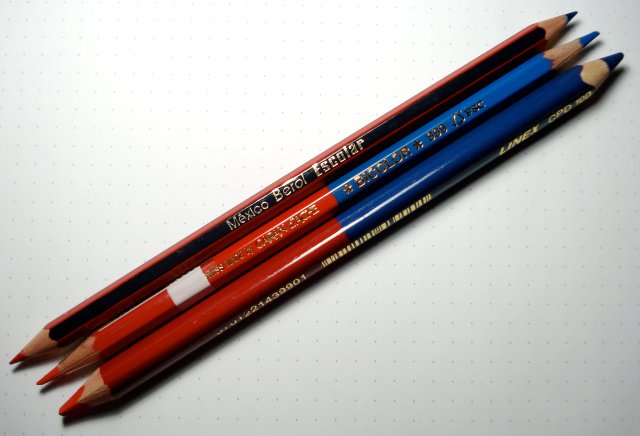
From Berol México we have the Escolar. A part of the global Sanford empire, Berol México continues to use historically important pen and pencil brand names such as Blaisdell and Esterbrook.
Sanford products from México can be found at some small independent art supply stores in Canada. The appearance of these products suggests that they have been in a dusty corner of a warehouse for some years. But I have no specific information.
This particular pencil is hexagonal and unsharpened, with the sides alternately painted red and blue. The stamping of the name may be on either a red or blue side.
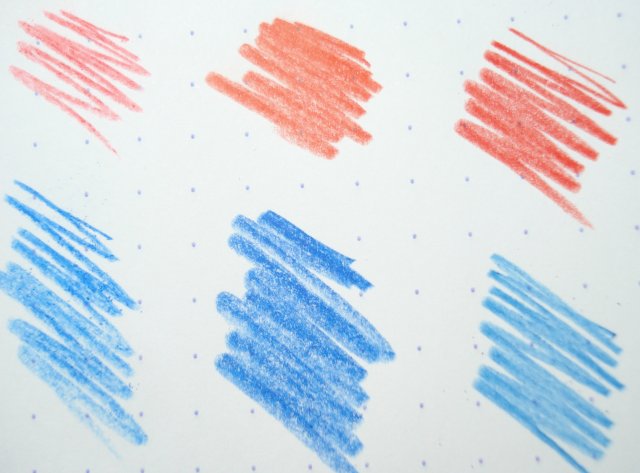
L to R: CPD 100, Bicolor 999, Escolar
From Caran d’Ache is the Bicolor 999. Unlike many better known Caran d’Ache products, this pencil doesn’t appear to be widely exported from Switzerland.
The pencil bears the FSC logo, and is hexagonal and pre-sharpened at both ends. The red end has a removable plastic cover embellished with a bar code.
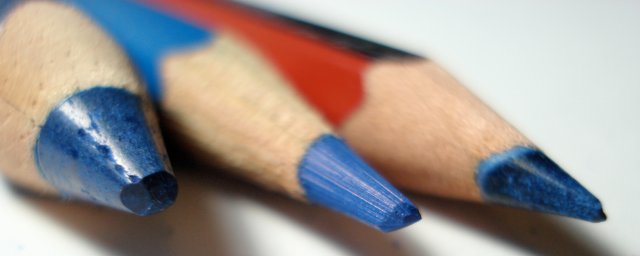
Lastly, the Danish brand Linex (though the products don’t claim to be made in Denmark) offers the CPD 100.
The CPD 100 is an oversized triangular pencil, with the red end sharpened. A set of ten comes in a plastic wallet.

Trying them on paper, the Escolar does surprising well for a student pencil. It sharpens easily, the “red” is fairly red, the point doesn’t break under pressure.
The Bicolor 999 is a delight. Both ends leave truly smooth and rich lines. The “red” is slightly on the orange side. I want to keep using it. It is one of those pencils that demonstrates the merits of making and using quality pencils.
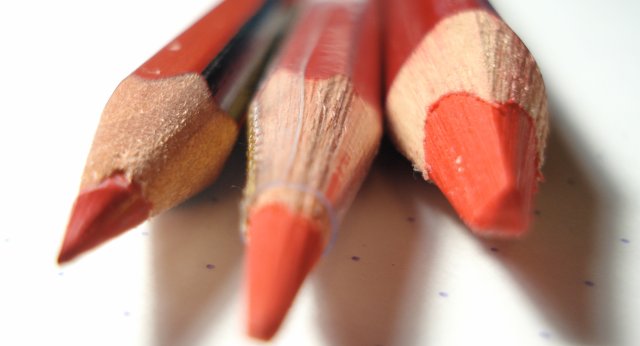
The CPD 100 is the disappointment of the three. The “red” is more on the pink side. The sharpening was tough, and the leads a bit on the scratchy side. It isn’t a terrible pencil, but there are better choices available.
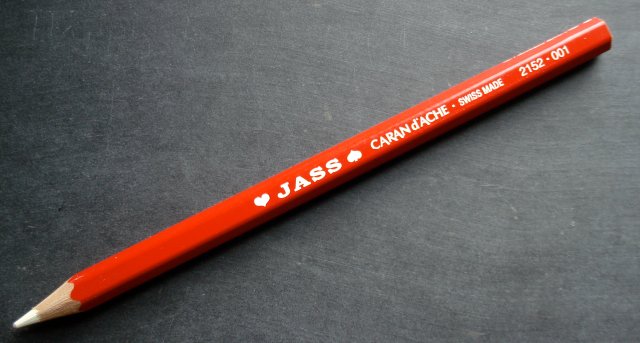
Here is an unusual pencil that I know little about. An oversized woodcased chalk pencil, the Jass allows for a lot more precision than a typical stick of chalk.
On slate:
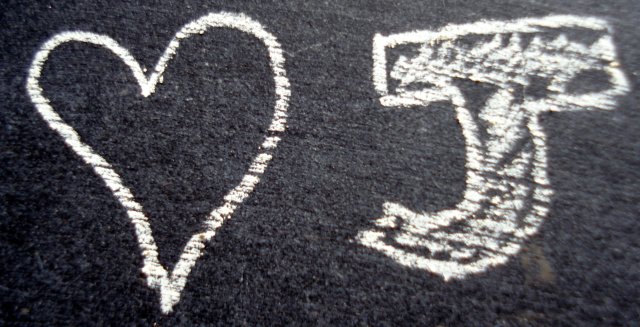

On a chalkboard:
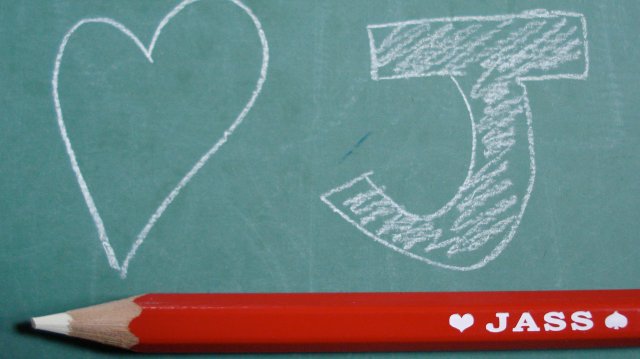
See Bleistift for a nice article on writing with chalk and slate (and variants).
Are there any teachers out there who might recall using chalk pencils?
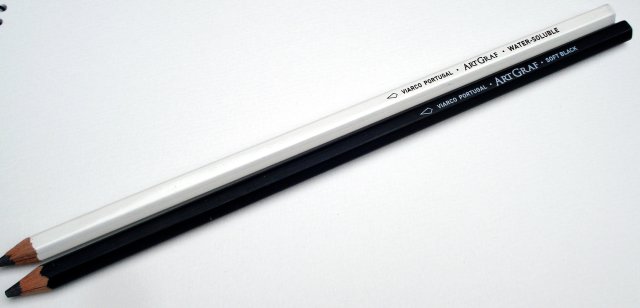
Viarco, a small traditional pencil manufacturer in Portugal, continues to innovate.
The ArtGraf pencils are a pair of 22cm black and white pencils. The matte black finished “Soft Black” is a carbon based pencil, while the glossy white finished “Water-Soluble” is, as the name states, a water soluble pencil.
The format and presentation are unique and compelling, yet modest. Pencils of this dimension are truly unusual (a standard pencil is about 17.5cm) , and the combination of the two artist specialty formulas results in a very nice product.
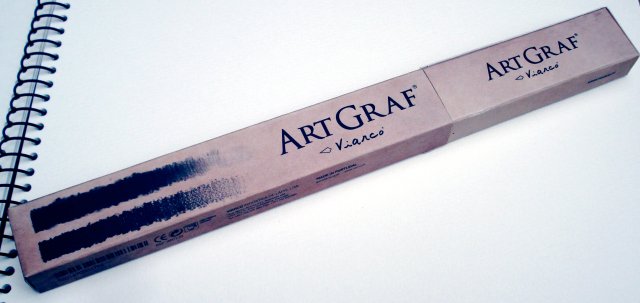
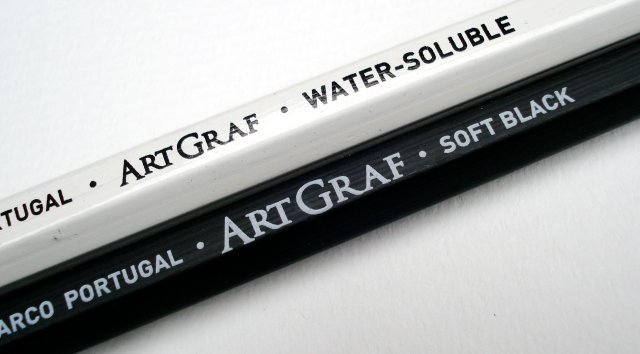
The specific formulas may be a matter of prefence (I found the Caran d’Ache water soluble pencils easier to use as a beginner), but it is hard to imagine than anyone who likes graphite based artistic media would not be impressed by a gift of ArtGraf pencils.

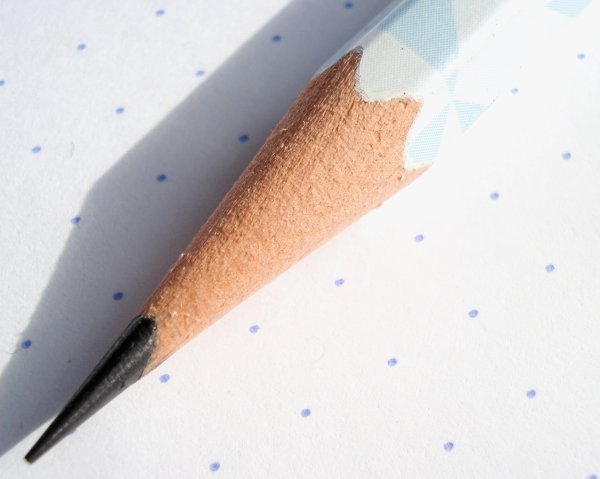
The Mitsubishi NanoDia pencil is supposed to be something special. The graphite is claimed to benefit from some important and noteworthy quality advances.
The line was announced in 2008, and started with mechanical pencils refills; woodcase pencils were introduced a couple of years later. The features of note include strength and density.
Now considering this matter, I’ve been wondering just how a major pencil manufacturer introduces product improvements. Paint or wood improvements are probably simple enough to introduce, and won’t likely disrupt the user base, but a change to a graphite formula could cause problems. A key differentiator of the top global pencil lines – the Hi-Uni, the Mono 100, the Castell 9000, or the Mars Lumograph 100 – is that they remain the same high quality product, and perform the same way, year after year, decade after decade. That they remain absolutely reliable and stable as tools for artists is a main selling point over readily available and less expensive alternatives.
So how then, does an improvement get introduced? Well, perhaps it depends on what the feature is – if the strength of a lead core can be improved without changing other pencil characteristics, then that feature could possibly be integrated with the main pencil line. But any feature that changes the feel of the lead on paper, or the blackness or luminescence of the line, or the known chemistry between the graphite and paper, probably has to be directed elsewhere. And perhaps even making the lead stronger might be seen as too much change to a formula.
So if Mitsubishi did find a way to make a graphite core denser and smoother, one can see that they may have had a problem on the matter of what to do with their discovery. An established line can’t just be altered. So the features went into a new product – the NanoDia.

NanoDia? Nanoscopic diamonds? Well, graphite molecules are no doubt the cousins of diamonds in the carbon family.
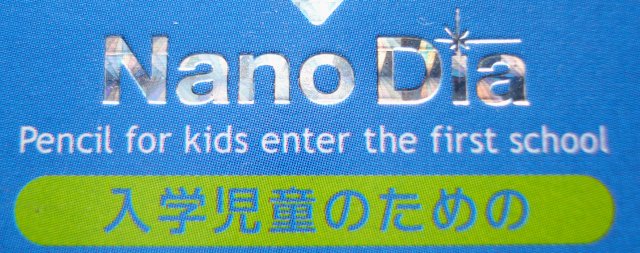
The pencils look like (and are labelled as) a product for children. So what about the scientific advances said to be in the formula? Shouldn’t this be a product in Mitsubishi’s premier Uni range? Here I am lost – if the product is what it claims to be, why is it priced and packaged as a lower end item?
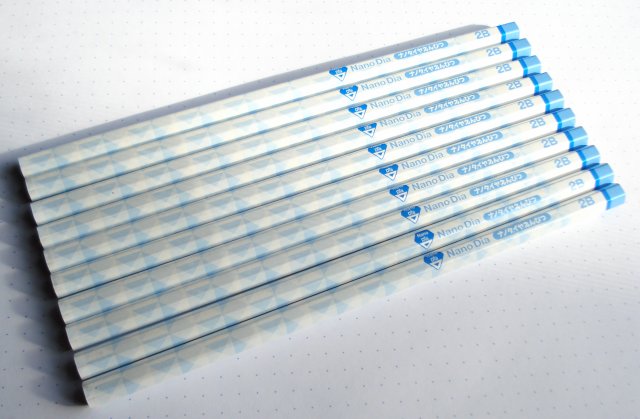
So regarding the pencils – they come in B and 2B grades, and a choice of green, pink, or blue finishes. They are hexagonal with unfinished ends. I bought a box of the 2B with the blue finish.
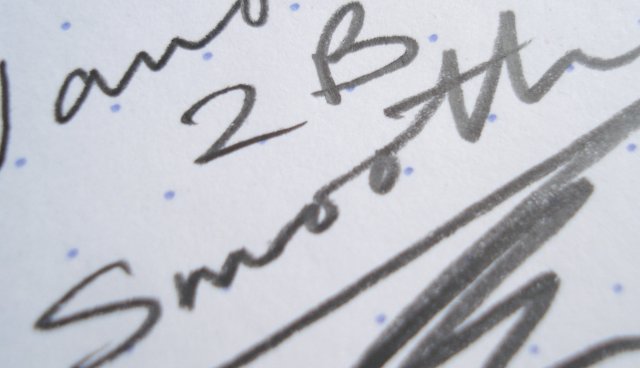
The pencil does leave a notably dense, rich, black line. I like it, but am undecided about the appearance.
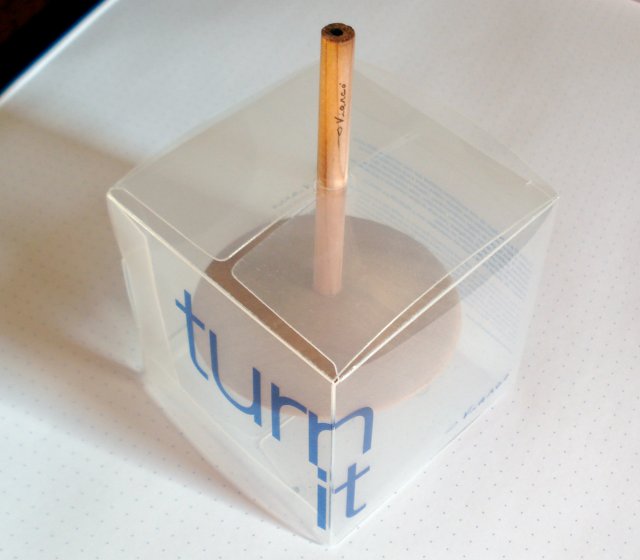
turn it is a wooden top whose axis is a woodcase pencil.
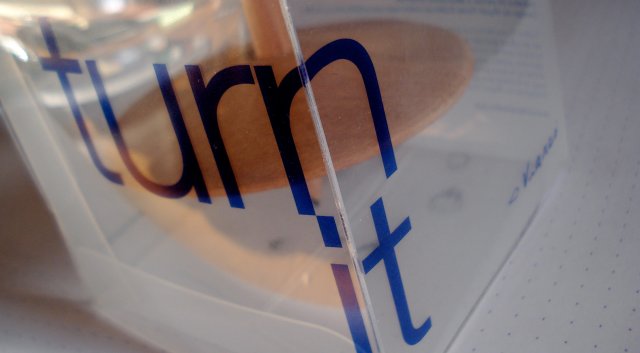
The packaging tells me that the design is by Miguel Soeiro and was produced by ESAD.CR and Viarco.
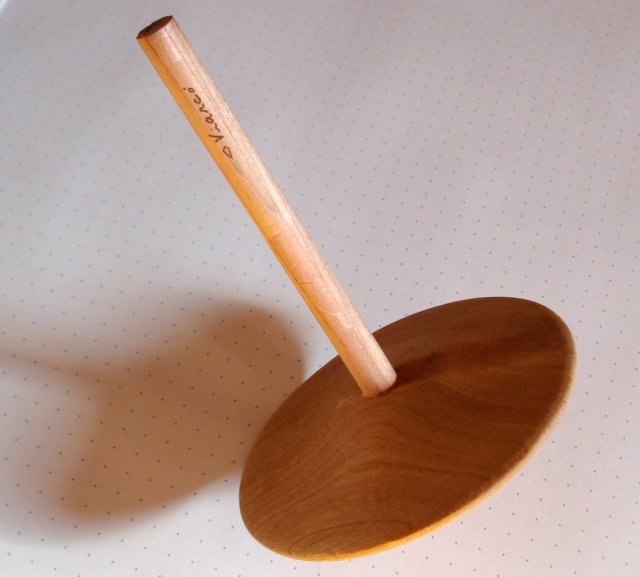
This is a short video showing the top in action. Depending on your browser, it will open inline in a new window, or download as an .mp4 file:
That was with minimal spin. You can get much more “air time” with practice, and the patterns left by the pencil also become quite intriguing:
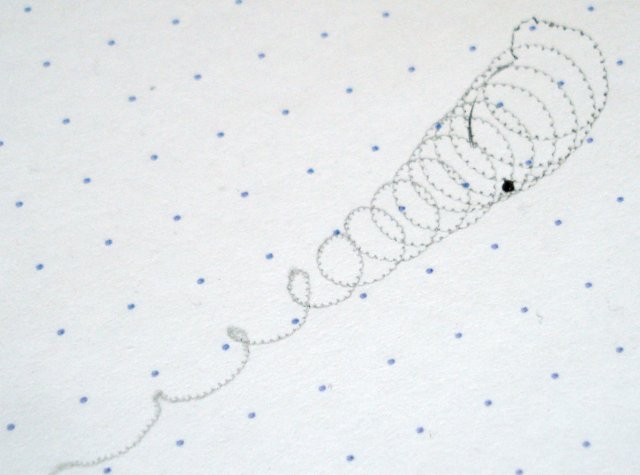
I’m sure a crafty person could build something like this on their own. Do you like it?